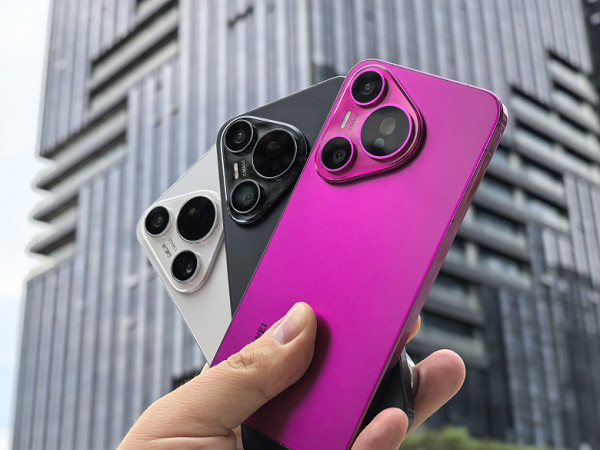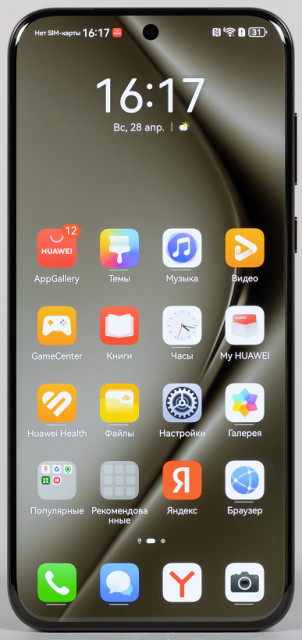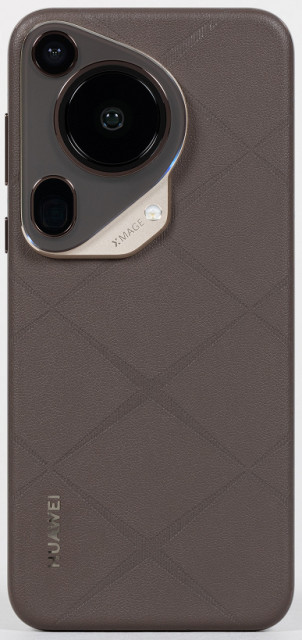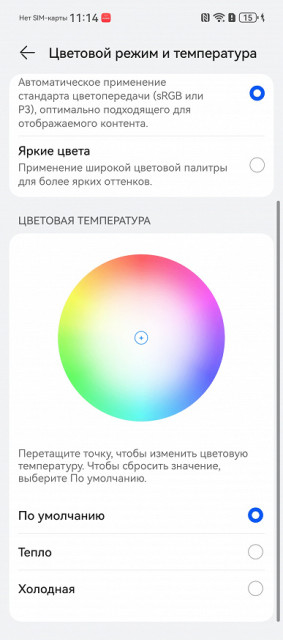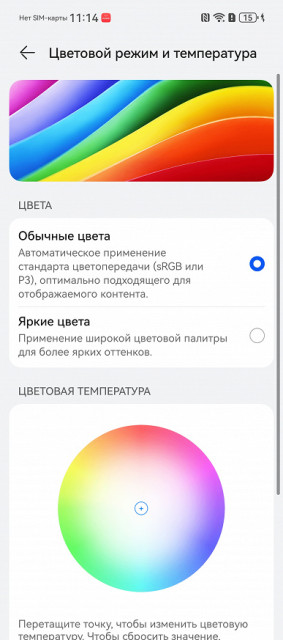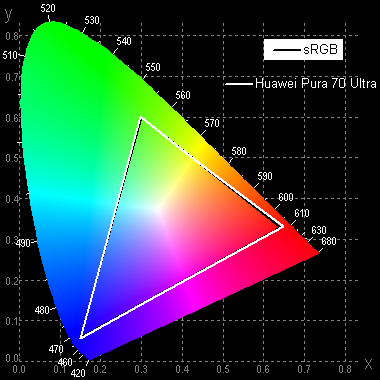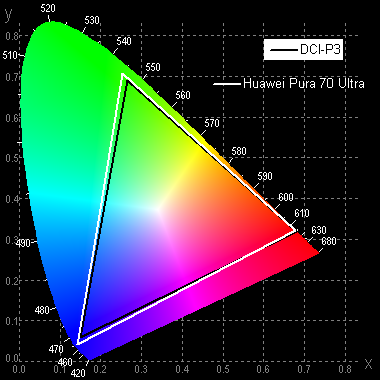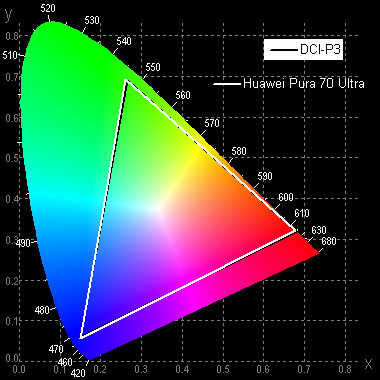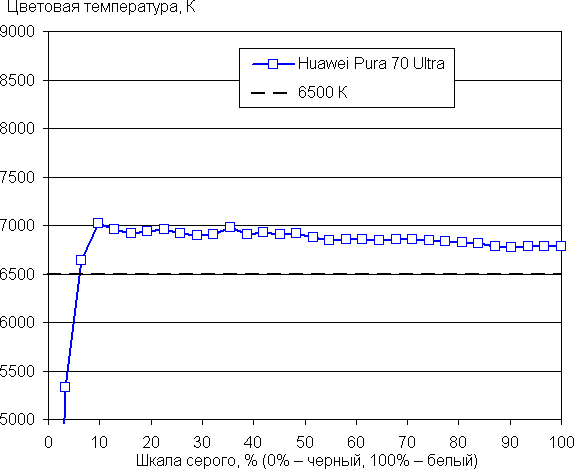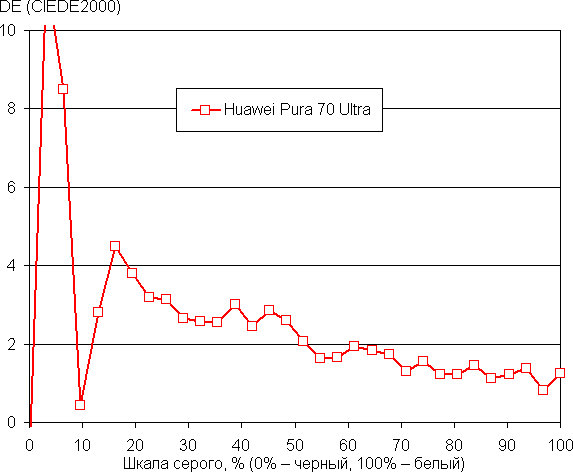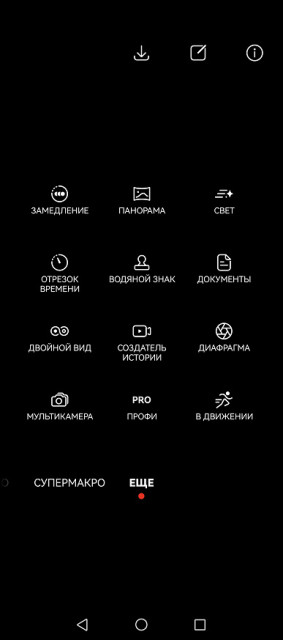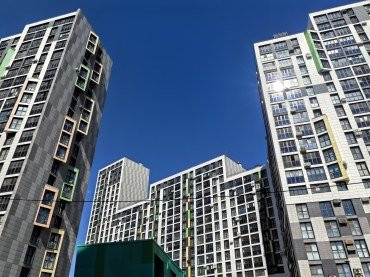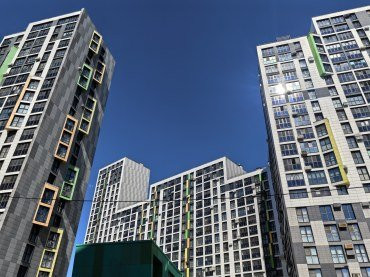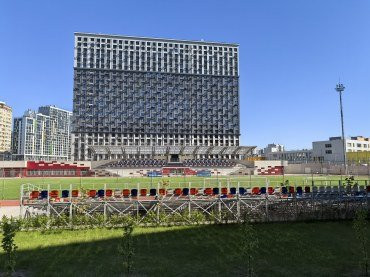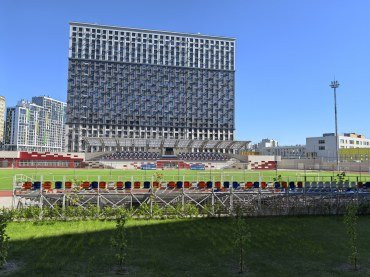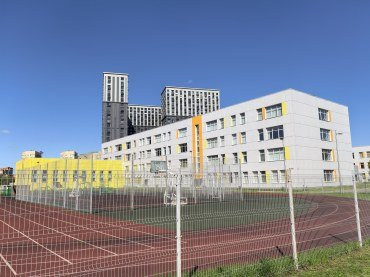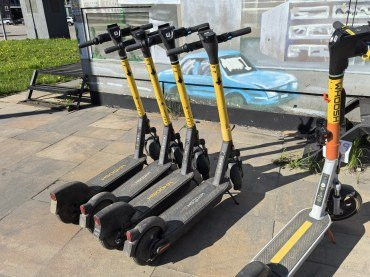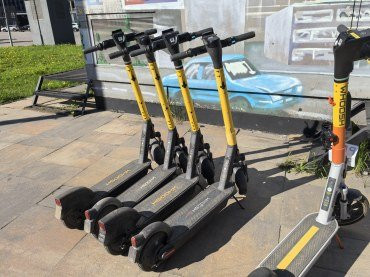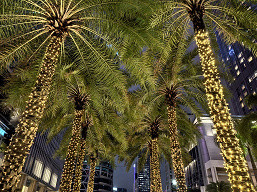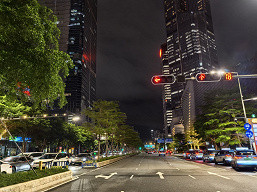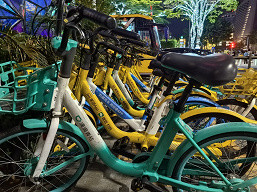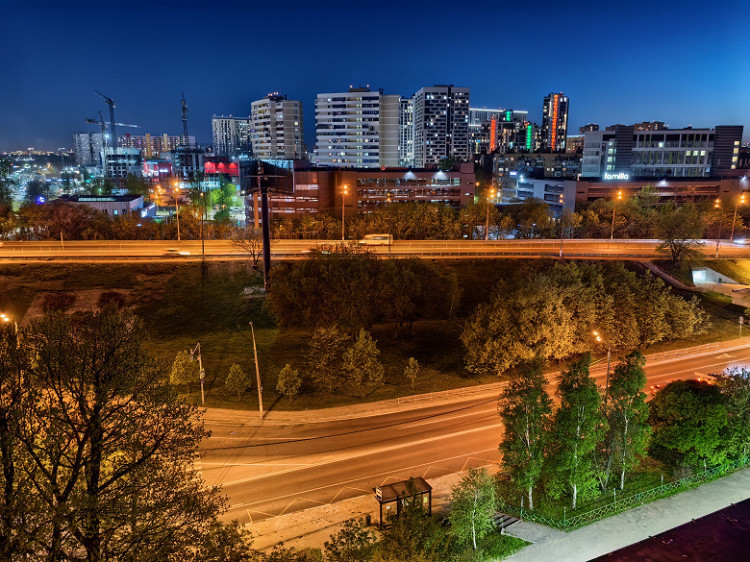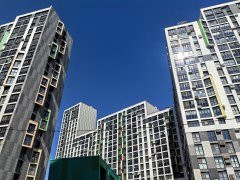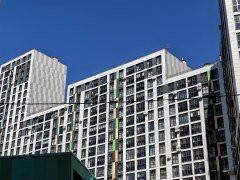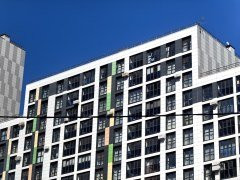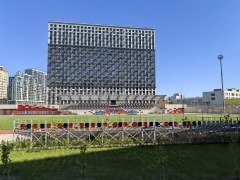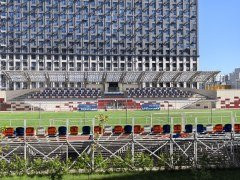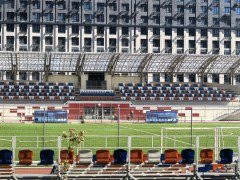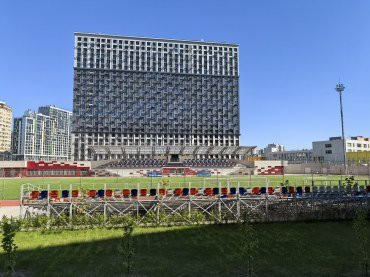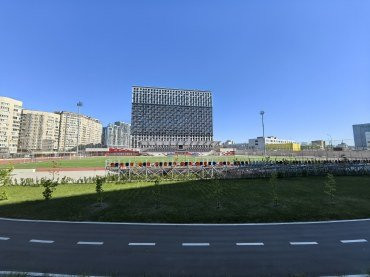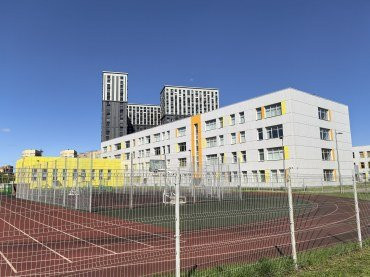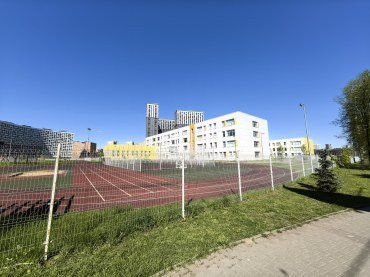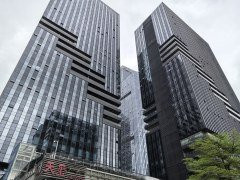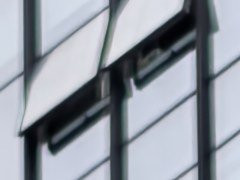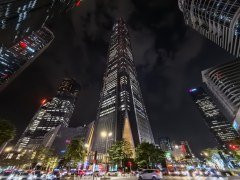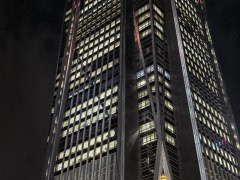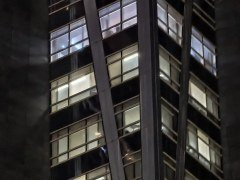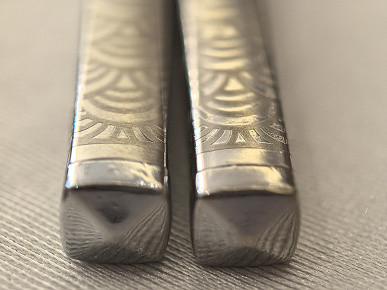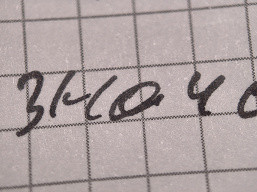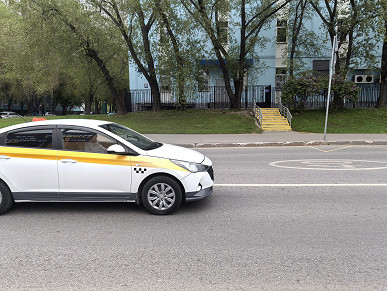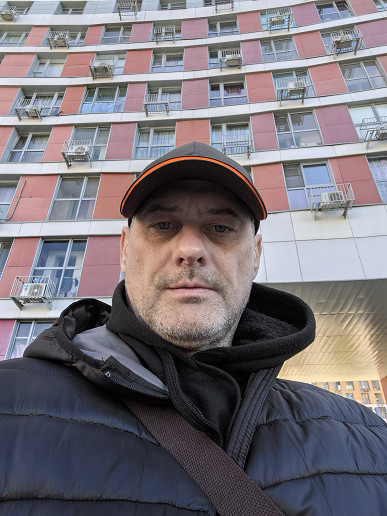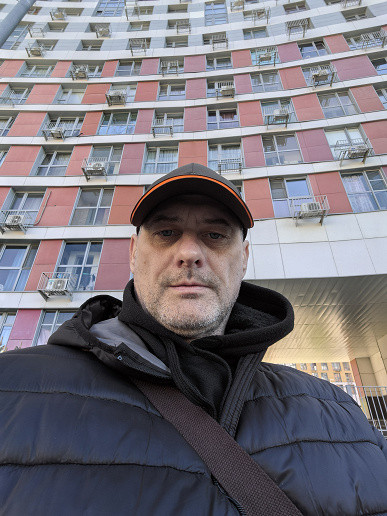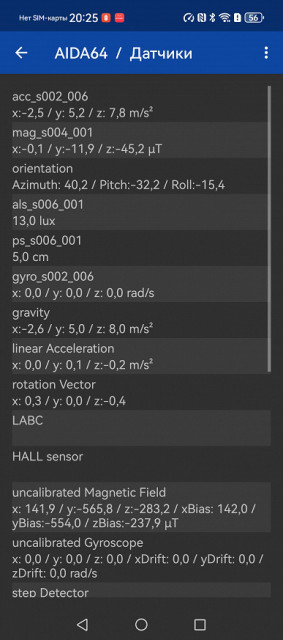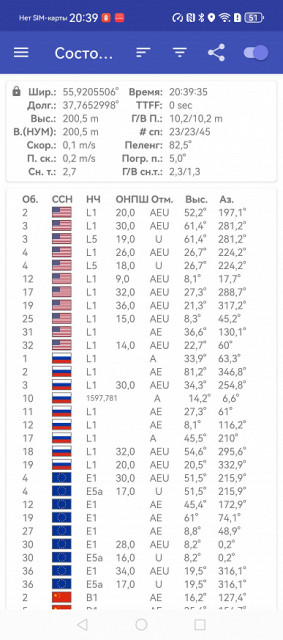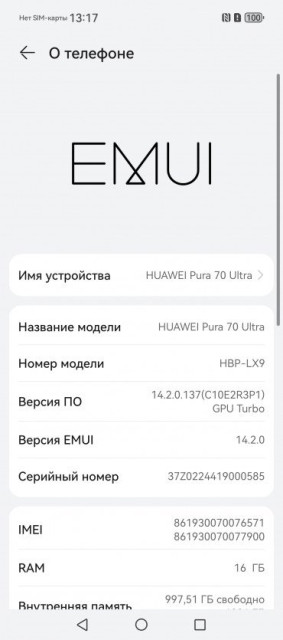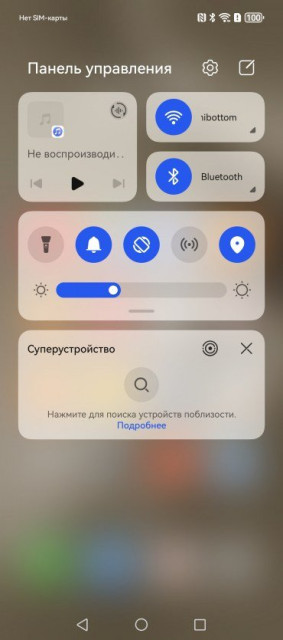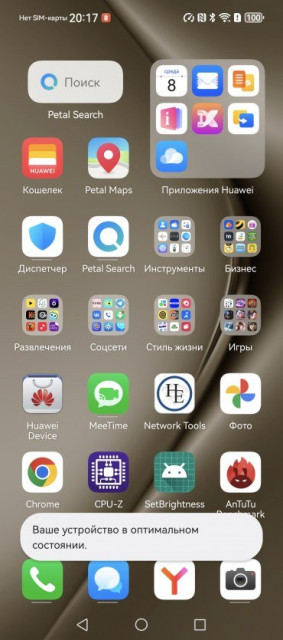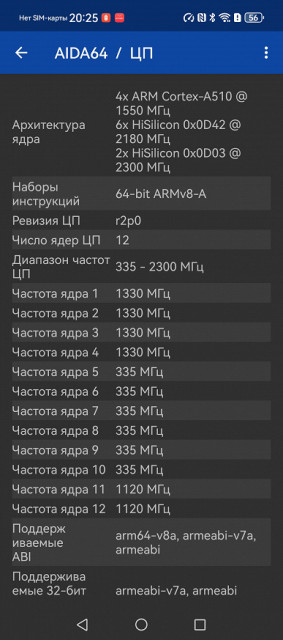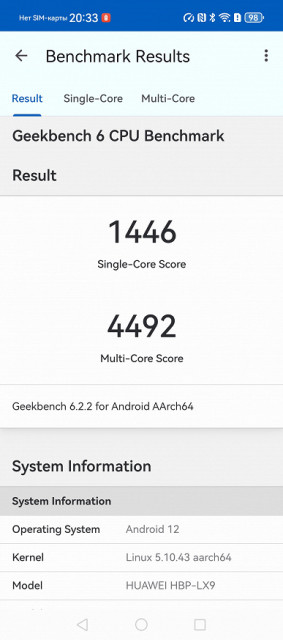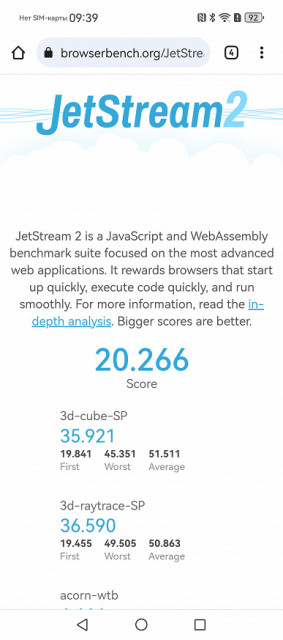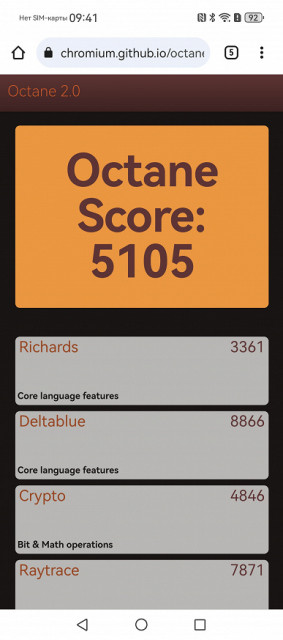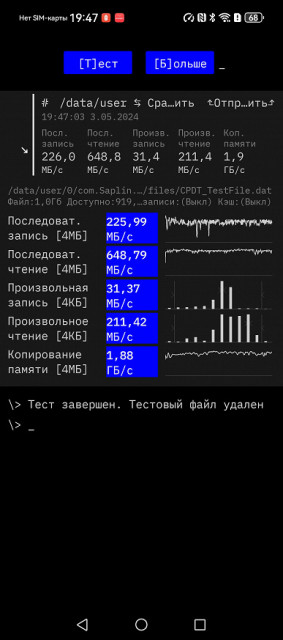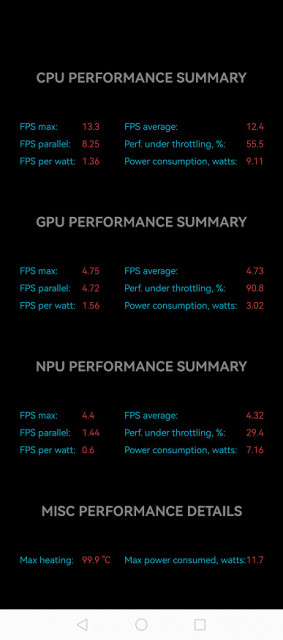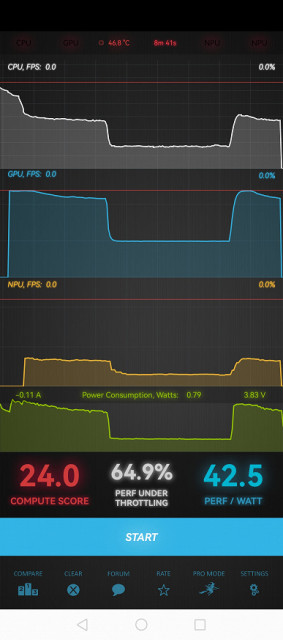After 12 years of releasing Huawei P series smartphones, the company has decided to rename this line. In the new season, the updated series is presented under the name Huawei Pura. It includes three models, and the flagship is the Huawei Pura 70 Ultra. This smartphone not only received the highest score in the DxOMark rating, but also consists of 90% Chinese components. Interested? Then let's move on to the details.
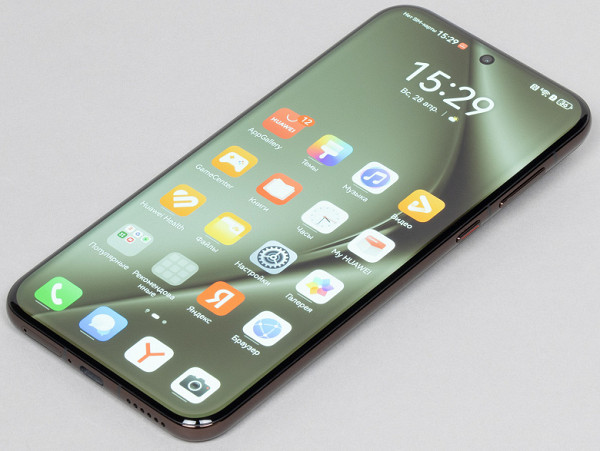
Main characteristics of Huawei Pura 70 Ultra
- SoC Kirin 9010, 8 processor cores (1×Taishan Big @2.3 GHz + 3×Taishan Mid @2.18 GHz + 4×Cortex-A510 @1.55 GHz)
- GPU Maleoon 910
- Operating system EMUI 14.2
- Touch display AMOLED, 6.8″, 1260×2844, 460 ppi, 120 Hz
- RAM 16 GB, internal memory 512 GB
- No microSD support
- Nano-SIM support (2 pcs.)
- Networks 2G GSM, 3G WCDMA, 4G LTE
- GPS (L1+L5), Glonass (L1), BDS (B1I+B1c+B2a+B2b), Galileo (E1+E5a+E5b), QZSS (L1+L5), NavIC
- WiFi 6
- Bluetooth 5.2
- NFC, NFC-SIM
- IR port
- USB 3.0 Type-C, DisplayPort 1.2, USB OTG
- There is no 3.5mm audio output for headphones
- Rear cameras 50 MP + 50 MP (telephoto) + 40 MP (wide), video 4K@60 fps, gyro-EIS, OIS
- Front camera 13 MP
- Proximity and lighting sensors, magnetic field, accelerometer, gyroscope
- Fingerprint scanner (under-screen, optical)
- Stereo speakers
- Protection degree IP68
- 5200 mAh battery, 100 W charging, 80 W wireless charging
- Dimensions 163×75×8.4 mm
Appearance and ease of use
The Huawei Pura 70 Ultra smartphone comes in a flat, square cardboard box. The kit includes an interface cable and a charger with a maximum output power of 100 W and an unusual dual connector. While the dual connector is convenient, it would be better if the two outputs were located separately so that you can connect two different cables at the same time.
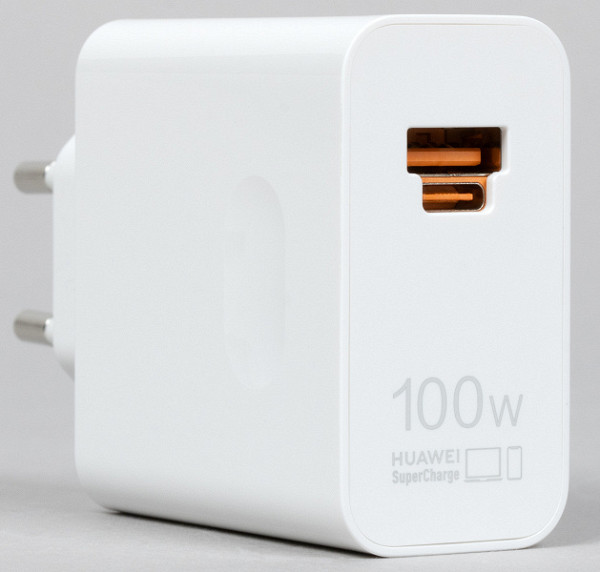
Huawei Pura 70 Ultra has a classic design with streamlined shapes, rounded sides and strongly rounded corners. The back panel and front glass of the screen are beveled on all four sides. Thanks to these rounded elements, the smartphone fits more comfortably in the hand, but it is more difficult to hold it — it tends to slip out, especially considering that the side frame is made of smooth, slippery metal.
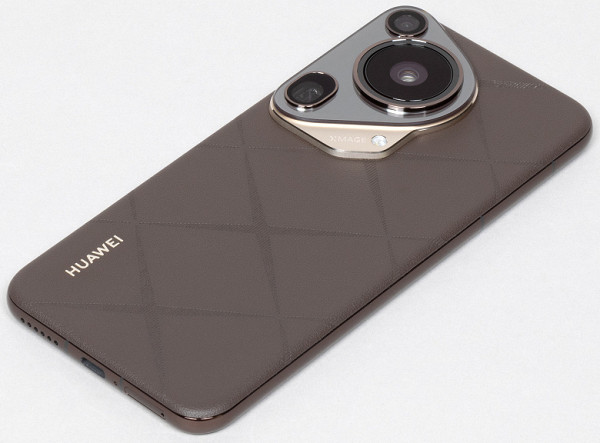
The textured back panel with embossing is made of eco-leather, which in the long run is less practical than glass or plastic, but feels nicer in the hand, at least while the smartphone is new. There are no fingerprints left on this material, but over time, sweat from the skin of the hands is gradually absorbed into it.
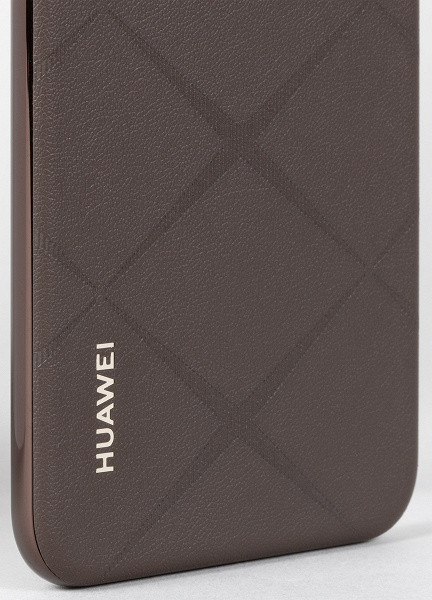
The front glass, second-generation Crystal Armor Kunlun Glass, is scratch-resistant and has curved edges. At the back, the camera block is decorated with an elegant platform that combines lenses and flash. The design of the unit, frankly speaking, is not for everyone, and together with the “leather” back panel evokes associations with retro style. However, this design has its fans. Taste is an individual thing, but the quality of execution is undeniable.
The smartphone is quite large and heavy, and the main camera sticks out a lot. Due to the sloping edges and rounded sides, the massiveness is slightly concealed in terms of sensations, but still the considerable weight of almost 230 grams is noticeable.

The front camera is installed behind a circular cutout in the screen matrix.
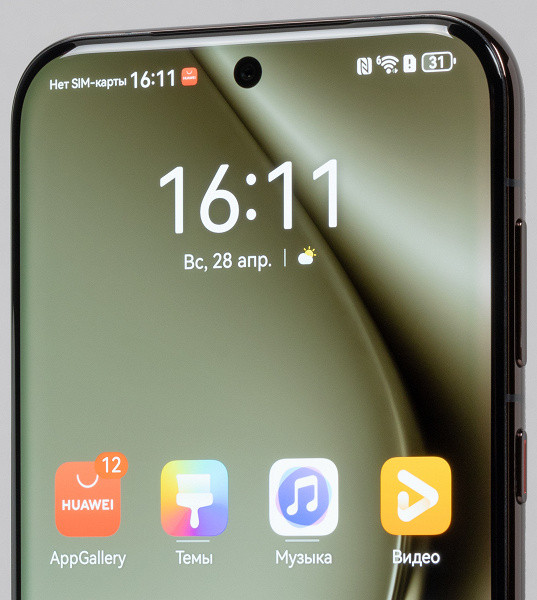
The fingerprint scanner is located under the glass of the screen at the bottom. This is not a top-end ultrasonic sensor, but only an optical one; it works tolerably, but not faster than a classic capacitive one. You have to hold your finger a little.
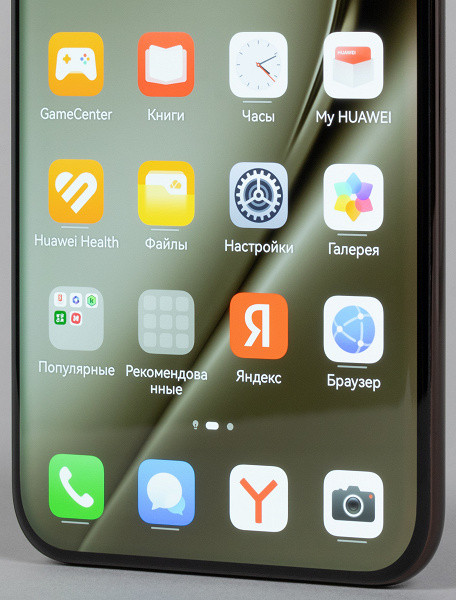
The buttons are as large as possible, wide, and conveniently located on one side, right under your finger. The keys are easy to locate blindly, have a long travel and a clear response. The power and lock button is additionally highlighted in red.
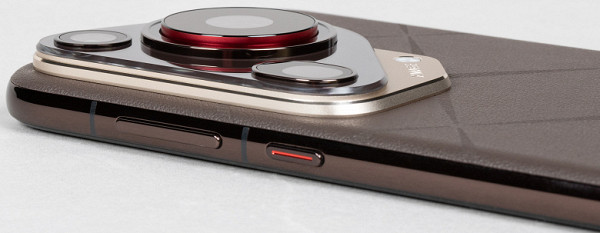
The slide-out tray can accommodate two Nano-SIM cards. There is no room for a microSD memory card.
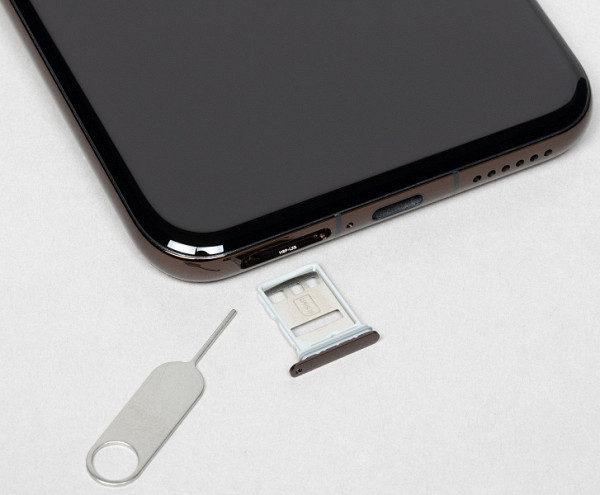
The bottom end also houses a speaker, microphone and USB Type-C connector. There is no 3.5 mm audio output for the minijack of wired headphones.

An additional microphone and an infrared port are installed at the top end.

Huawei Pura 70 Ultra received protection against dust and moisture according to the IP68 standard. The manufacturer indicates on the company website the possibility of complete immersion in fresh water to a depth of 2 meters for up to half an hour.

The smartphone is available in several colors, but three are arriving on the Russian market: green, brown and black.
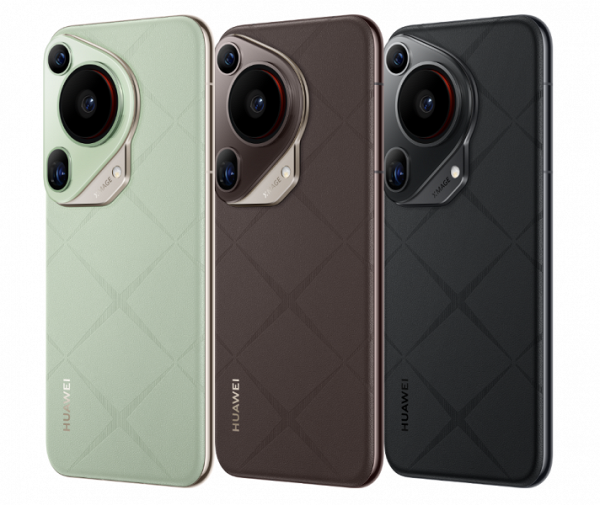
Separately, you can purchase stylish magnetic cases with a monogram, made of hard plastic with eco-leather elements.
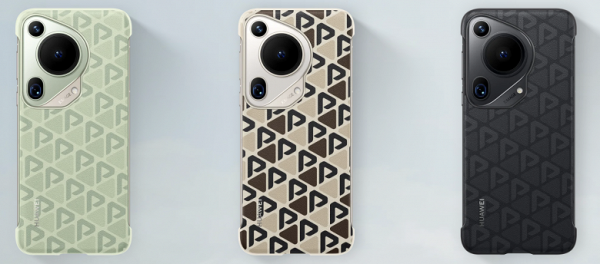
In such a case, the device is literally transformed. His “gloomy”, “heavy” appearance becomes lighter, airier, and friendlier.
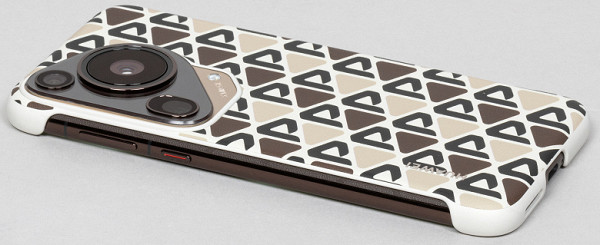
Screen
The Huawei Pura 70 Ultra smartphone is equipped with a 6.8-inch AMOLED display with a resolution of 1260×2844, protected by curved Kunlun Glass. The physical size of the matrix is 72x157 mm, and the pixel density is 460 ppi. The width of the frame around the screen, from the edge of the matrix to the body, is about 3 mm on all sides. The display supports HDR and multi-touch up to 10 touches.
The front surface of the screen is a mirror-smooth glass plate that is scratch-resistant. The reflection of objects indicates that the anti-glare properties of the screen are better than those of the Google Nexus 7 (2013) (hereinafter referred to as Nexus 7). The screen has a special oleophobic coating that is significantly more effective than that of the Nexus 7, making fingerprints easier to remove and appearing slower than on regular glass.
When displaying a white field on the entire screen and manually controlling brightness, its maximum value reaches 590 cd/m² under normal conditions. In bright light or in HDR mode, the brightness can temporarily increase to 1500 cd/m² if the smartphone does not overheat. The maximum brightness is very high: the smaller the area of white on the screen, the brighter it glows. Thus, the actual maximum brightness of the white areas often exceeds the specified values. Given the excellent anti-glare properties, screen readability in the sun should be good. The minimum brightness is 1.4 cd/m², which allows you to comfortably use the device in complete darkness. Automatic brightness adjustment based on the light sensor (located under the screen at the top, closer to the right edge) depends on the position of the brightness slider: the user can set the desired brightness level in the current conditions. In complete darkness, the auto-brightness function reduces the brightness to 4 cd/m² (very dark), in an artificially lit office (approximately 550 lux) it sets it to 120 cd/m² (normal), and in bright sunlight it increases to 1100 cd/m² (quite ). We adjusted the brightness in complete darkness, obtaining values: 12, 150 and 1100 cd/m² for the three specified conditions. The auto-brightness function works adequately, allowing the user to adjust it to suit their needs.
At high and medium brightness levels, modulation with a frequency of 360 Hz is noticeable. The graphs below show brightness (vertical axis) versus time (horizontal axis) for various brightness levels in 60Hz mode.
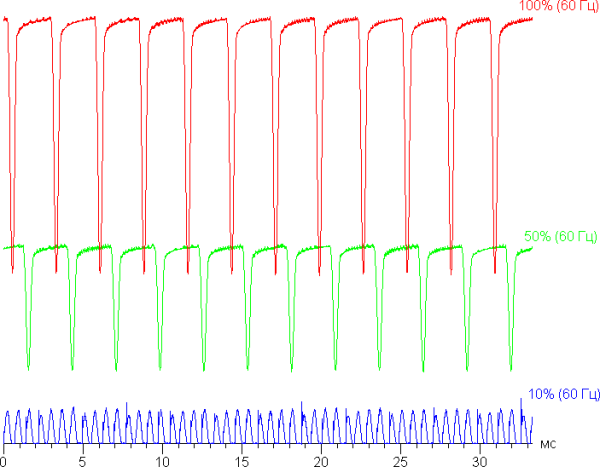
It can be seen that at high and medium brightness the modulation frequency is not very high (360 Hz), but the modulation duty cycle is low, and the modulation phase varies across the screen area, so there is no visible flicker. When the brightness is significantly reduced, modulation occurs at a high frequency (1.44 kHz), which also eliminates visible flicker.
In the screen settings you can enable a mode with an increased refresh rate of up to 120 Hz:
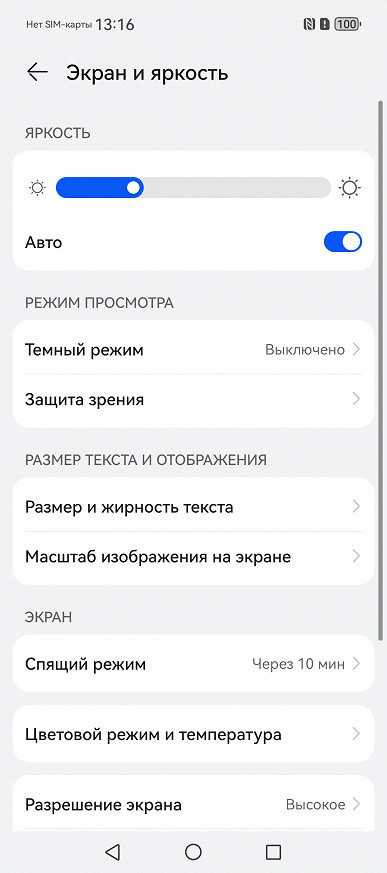
The nature of the modulation did not change.
You can also try enabling a feature called Reduce Flicker.

In English-language literature and news, the term DC Dimming is usually used (in graphs we denote it as DCD). When this function is enabled, only the modulation pattern at low brightness changes. There is no visible flicker, as before. Below are the graphs for the 60Hz refresh rate mode:
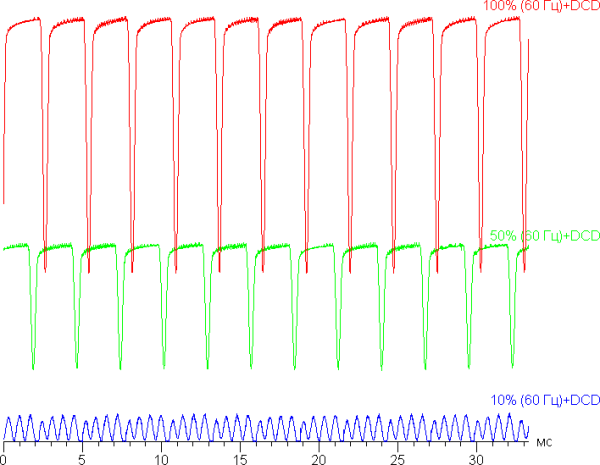
This screen uses an AMOLED matrix — active matrix organic light-emitting diodes. A full-color image is formed using subpixels of three colors: red ®, green (G) and blue (B). However, there are half as many red and blue subpixels, which can be referred to as RGBG. This is confirmed by a fragment of a microphotograph:
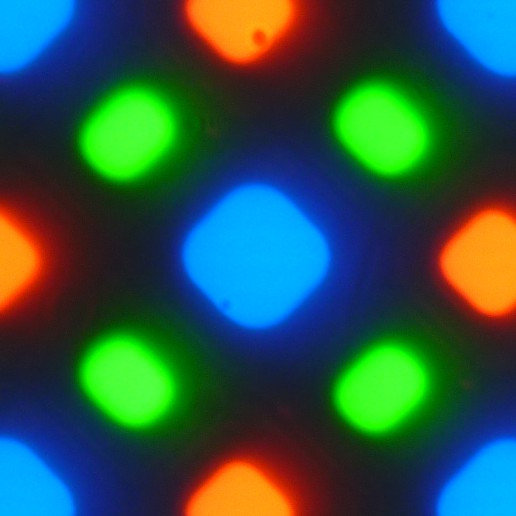
In the fragment above you can see 4 green subpixels, 2 red (4 halves) and 2 blue (1 whole and 4 quarters). By repeating these fragments, you can fill the entire screen without breaks or overlaps. For such matrices, Samsung introduced the name PenTile RGBG. The manufacturer estimates screen resolution based on green subpixels, which results in lower resolution for the other two colors. Despite some artifacts caused by this structure, the high resolution of the screen helps to minimize their impact.
The screen has excellent viewing angles. The brightness decreases at an angle on both screens, but on a smartphone this is less noticeable. Therefore, even with formally the same brightness, the screen of this smartphone visually looks brighter (compared to LCD screens), especially from a viewing angle. White shifts slightly towards a blue-green hue at high angles, but black remains perfectly black. In photographs where screens are compared at the same brightness and color balance, this can be seen.
Example with a white field (Regular colors profile):
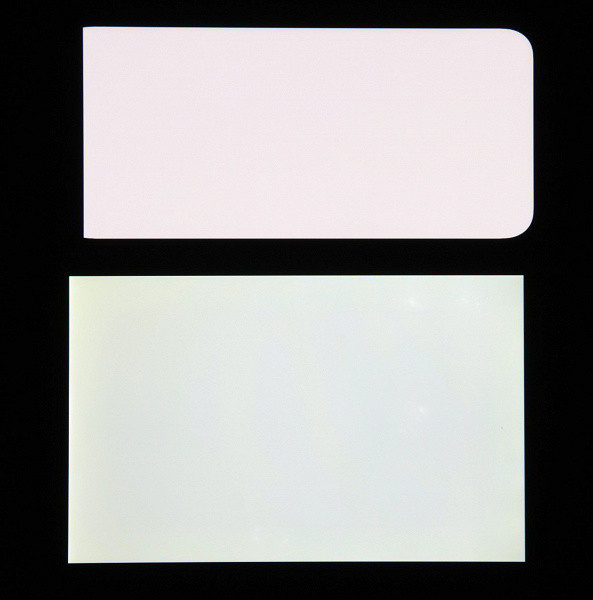
We note good uniformity of brightness and color tone of the white field (with the exception of barely noticeable darkening and a change in hue towards the curved edges).
And a test picture (profile Regular colors):
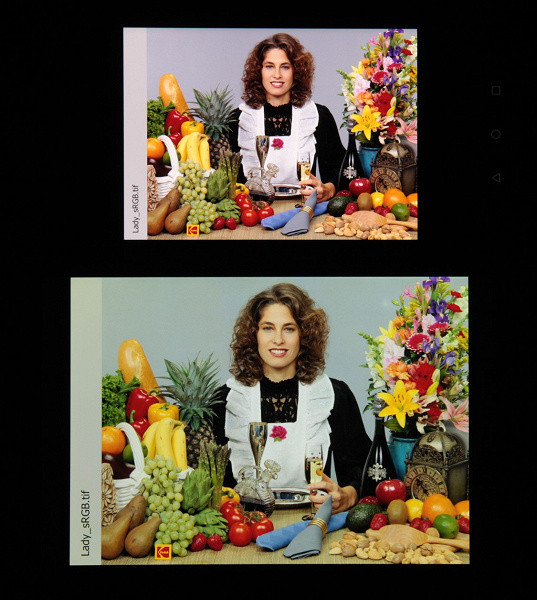
Color reproduction is good, colors are rich, and their balance varies slightly between screens. However, please note that the photograph is not a reliable source of color quality assessment and is provided for illustrative purposes only. For example, the reddish tint that may be visible in a smartphone photo is actually not as noticeable during normal viewing, as hardware tests using a spectrophotometer confirm. This is due to differences in the spectral sensitivity of the camera matrix and human vision.
It's also worth noting that the image takes up the entire available screen area and extends onto its curved edges, which can lead to slight darkening and color distortion. This is especially noticeable in bright light, where these areas often have glare, making it difficult to view images full screen. Even movies with an aspect ratio of 16:9 can come up on curved edges, which is not always appropriate for watching videos. This slight crease is also present on the short sides of the screen, further increasing glare.
The photo was taken with the «Normal Colors» profile active in the screen settings, available in two options.
The Vivid colors profile is visually slightly different in color balance:
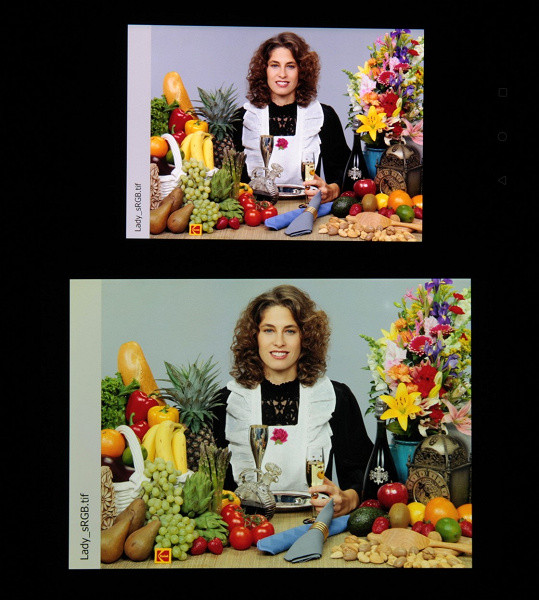
Switching the state of the matrix elements occurs almost instantly, however, during the switch-on phase, a step may occur for about 17 ms (which corresponds to a screen refresh rate of about 60 Hz) or about 8 ms (120 Hz). For example, this is what the dependence of brightness on time looks like when moving from black to white:
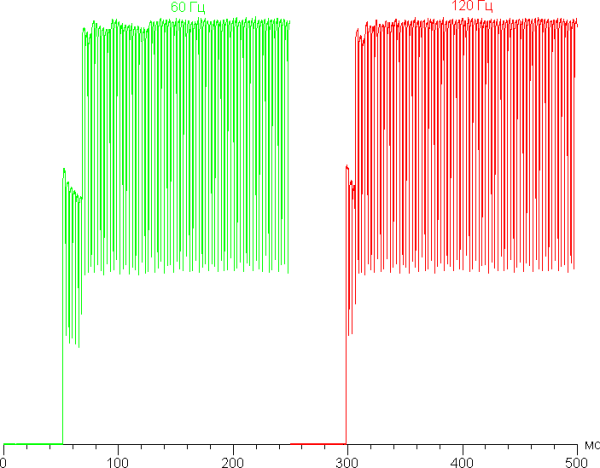
In some situations, the presence of such a step can cause the effect of “trails” that trail behind moving objects.
An analysis performed on 32 points with equal intervals in the numerical values of shades of gray showed that the gamma curve does not have significant deviations either in the area of highlights or in the area of shadows. The exponent of the approximating power function is 2.24, which is close to the standard value of 2.2. In this case, the real gamma curve slightly deviates from the power-law dependence.

Recall that in OLED screens, the brightness of image fragments dynamically changes depending on the nature of the displayed content, decreasing slightly for overall bright images. This means that the resulting dependence of brightness on hue (gamma curve) probably does not correspond to the gamma curve of a static image, since the measurements were carried out with sequential output of shades of gray over almost the entire screen area.
The color gamut when using the Vivid Colors and Normal Colors profiles, for example in Google Chrome, is close to sRGB.
The color components are mixed together to a large extent, which narrows the gamut to sRGB:
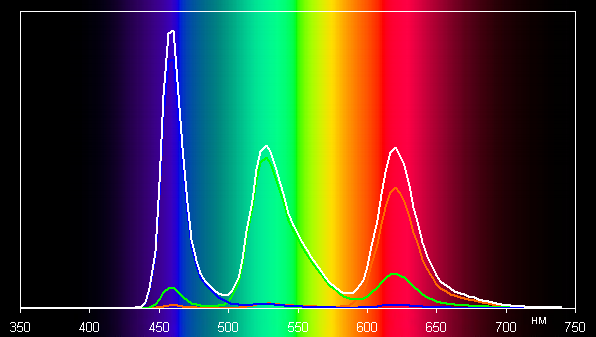
Regular colors
In case images contain the Display P3 profile, when viewing them in the standard Gallery application, we found that the color gamut becomes wider than sRGB and very close to DCI-P3. When using the Vivid Colors profile, the coverage is slightly wider.
Let's look at the spectra in the case of test images with the Display P3 profile:
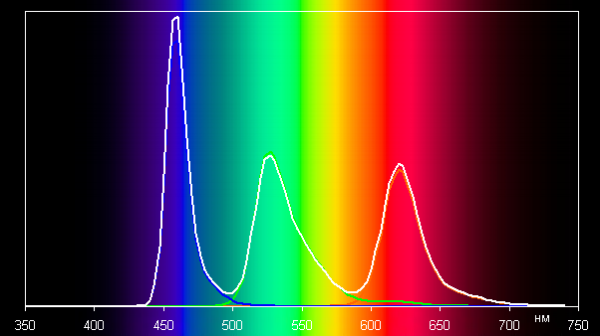
Bright colors
In this case, there is no cross-mixing of components, which indicates that the native color space of the screen is close to Display P3.
The device provides the ability to correct color balance by selecting a color temperature profile or adjusting the hue on the color wheel. However, even when using the «Normal Colors» profile, the balance of shades on the gray scale remains good, since the color temperature is close to the standard 6500 K, and the ΔE indicator (deviation from the blackbody spectrum) remains below 10, which is considered a good indicator for a consumer device. Moreover, color temperature and ΔE remain stable from shade to shade, which has a beneficial effect on the visual assessment of color balance.
Briefly about the functional features and advantages of the screen:
- The screen has a high maximum brightness (up to 1500 cd/m²) and excellent anti-glare properties, allowing you to use the device even in bright sunlight.
- Minimum screen brightness allows comfortable use in complete darkness (1.4 cd/m²).
- The automatic brightness adjustment function works effectively.
- Effective oleophobic screen coating.
- No visible flicker and supports high refresh rate mode (120 Hz).
- Close to sRGB color gamut and good color balance when choosing the appropriate profile.
- Possibility of output in P3 color gamut with support of standard software.
- Advantages of OLED screens such as true blacks and less brightness drop when viewed from an angle.
- Excellent image quality, despite minor distortion and brightness loss at curved edges.
Overall, the screen has high image quality and a wide range of functions for comfortable use in various lighting conditions.
Camera
The Huawei Pura 70 Ultra smartphone is equipped with three full-fledged rear cameras: main, long-focus and wide-angle. All cameras are equipped with autofocus, and only the wide-angle one does not have an optical stabilizer.
- 50 MP, 1.0″, f/1.6—f/4.0, 23 mm, PDAF, Laser AF, sensor-shift OIS (main)
- 50 MP, f/2.1, 90 mm, PDAF (5 cm — ∞), OIS, 3.5× optical zoom (long focal length)
- 40 MP, f/2.2, 13 mm, AF (wide angle)
The main camera is equipped with a variable aperture lens, as well as a mechanically retractable lens. By default, the camera takes photos with pixel binning, offering a resolution of 12.5 MP, but there is also the option to switch to a full resolution of 50 MP. With such a high-quality sensor, using the 50 MP mode provides a significant increase in image detail.
Photos taken with the main camera are of high quality, making this smartphone a true flagship in photography. The pictures contain maximum detail, excellent clarity, contrast and depth. There is virtually no noise, artifacts or distortion. The dynamic range is wide, allowing you to preserve detail in both light and dark areas of the image. Color reproduction is also great, although a little richer than in real life, making photos look more vibrant and eye-catching.
In order to better compare the quality of photos, let's look at a series of pictures taken under the same conditions simultaneously on two leading photo flagships: Honor Magic6 Pro and Google Pixel 8 Pro.
Huawei Pura 70 Ultra:
Honor Magic6 Pro:
Google Pixel 8 Pro:
In night mode, the camera significantly enhances color saturation, which immediately catches the eye. The sharpness and clarity of images remain at a high level, and detail is preserved, but the camera reduces image noise too actively. Although the night shots are impressive in their visual impact, they can be considered a bit unnatural.
The Huawei Pura 70 Ultra camera not only offers 3.5x optical zoom using a telephoto lens, but also 5x hybrid zoom, accessible through the corresponding buttons on the viewfinder screen. The long-focus lens is equipped with autofocus and stabilization, providing the sharpest pictures with high detail. The detail achieved at 5x zoom clearly demonstrates its effectiveness and is not a myth.
The wide-angle camera, as expected, produces less detail, but the results are quite satisfactory for the ultra-wide lens. Blurring around the edges of the frame is minimal, and contrast and color rendition are almost identical to the main camera. However, there is less detail and increased edge sharpness, perhaps in an attempt to hide this. Overexposure is also noticeable, indicating limited dynamic range.
And a couple more series of photos from wide-angle to maximum zoom (100×), day and night:
For macro photography, both an ultra-wide-angle camera and a module with a telephoto lens are used. When approaching a subject in normal (1×) mode, the viewfinder image may become distorted and the message “Super Macro Mode Enabled” will appear and the Ultra Wide Angle camera will be activated. However, by selecting a flower on the zoom level bar or switching modes to “Super Macro”, shooting is carried out using a telephoto lens. Below are some examples of such macro photography:
In this case, a miniature with a wider frame appears in the corner for ease of targeting, but the frame in it lies. It seems that the smartphone itself is a little confused about which module it shoots with.
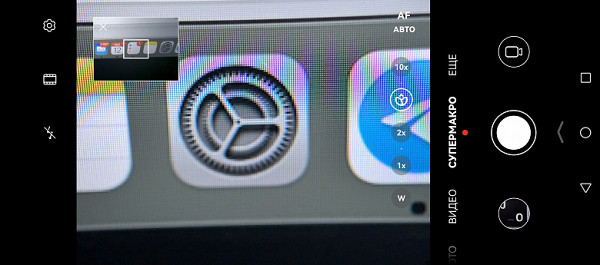
The main focus of Huawei's global marketing strategy is on capturing action scenes. It is not surprising that on the Huawei Pura 70 Ultra it is extremely difficult to even take blurry frames, as if time stood still at the moment of shooting, even animals seem frozen in the air. Immediately after the camera is triggered, a slightly blurry image appears in the gallery, but after a few seconds it becomes clear. Below are screenshots from the gallery at these moments. However, only the correct option will remain in memory:
In the field of video shooting, the Huawei Pura 70 Ultra smartphone does not show itself as strongly as in photography. Videos are recorded with less saturated and contrasting colors, and sometimes there is a slight flicker. Despite this, the quality remains at a fairly high level, but there are devices that make video better.
The camera allows you to shoot video in resolutions up to 4K at a frame rate of 60 frames per second with optical stabilization and electronic stabilization based on the built-in gyroscope (gyro-EIS). The sound quality is also recorded decently.
The front camera is the only one (13 MP, f/2.4, AF), but offers two “focal lengths” due to the cropping of the central part of the frame. While the quality isn't perfect, detail in the center of the frame is excellent. However, the image may appear a little faded, flat, lacking contrast and volume.
Telephone and communications
The Huawei Pura 70 Ultra smartphone supports mobile networks up to 4G. In the urban area of the Moscow region, the device demonstrates reliable operation in wireless networks, providing a stable connection and quick restoration of communication after temporary interruptions. It also has a wireless adapter that supports tri-band Wi-Fi 6, Bluetooth 5.2 and NFC. There is an infrared port for controlling household appliances, but there is no e-SIM support.
The two-channel satellite navigation module supports GPS, Glonass, BDS, Galileo, QZSS and NavIC. Satellites are quickly detected during a cold start, and the positioning accuracy leaves an impression.
The voice of the interlocutor in the speaker is perceived clearly, and the volume is sufficient. Medium power vibration motor. The built-in sensors, including the gyroscope, work properly.
Software and multimedia
Huawei Pura 70 Ultra runs on the software platform of its own interface EMUI 14.2 (in the global version). Chinese variants of Huawei devices use HarmonyOS. The EMUI interface is well known to fans of Huawei mobile technology; it is well designed and optimized. It has all the necessary functions for comfortable use, without intrusive advertising. The Russian version of the smartphone may have an excessive number of pre-installed applications, but Huawei users have already become accustomed to this and have found alternative solutions. The device offers its own app store, AppGallery. Petal utilities are used for search, navigation and other services.
The smartphone is equipped with high-quality stereo speakers that produce clear and spacious sound at high volumes. There are no complaints about the audio part — the sound is reproduced perfectly both through speakers and through connected headphones. Thanks to Bluetooth 5.2 support, the smartphone easily connects to wireless headphones.
Performance
The Huawei Pura 70 Ultra smartphone runs on the Kirin 9010 processor, which includes 8 cores: 1×Taishan Big @2.3 GHz + 3×Taishan Mid @2.18 GHz + 4×Cortex-A510 @1.55 GHz. The Maleoon 910 GPU provides high graphics performance. The device is equipped with 16 GB of RAM (LPDDR5) and 512 GB of internal storage. Unfortunately, there is no option to install a microSD memory card. Connection of external devices via the USB Type-C port in USB OTG mode is supported.
There is no official information about the technical process and the chip manufacturer, but according to Bloomberg, citing TechInsights, the Kirin 9010 is manufactured on a 7-nanometer process and is a direct successor to the previous Kirin 9000S. The chips are manufactured in China by SMIC, which is not yet equipped to produce 5nm chips.
In benchmarks, the SoC Kirin scores lower than the flagship solutions of competitors, but for everyday use the performance is more than enough for both smooth operation of the interface and launching complex games without slowdowns.
Testing in comprehensive tests AnTuTu and GeekBench:
To make it easier to analyze the results of testing a smartphone in the latest versions of popular benchmarks, we have collected all the data in tables. Typically, the table also includes several other devices from different market segments that have also been tested on similar versions of the benchmarks. This is done for a more clear comparison of the results obtained.
Unfortunately, within the framework of one comparison it is impossible to present results from different versions of benchmarks, so many worthy and relevant models remain “behind the scenes”, since they were tested on previous versions of test programs.
| Huawei Pura 70 Ultra (Kirin 9010) | Honor Magic6 Pro (Qualcomm Snapdragon 8 Gen3) | Realme 12 Pro+ (Qualcomm Snapdragon 7s Gen2) | Google Pixel 8 Pro (Google Tensor G3) | Samsung Galaxy S24 Ultra (Qualcomm Snapdragon 8 Gen3) | |
|---|---|---|---|---|---|
| AnTuTu (v9.x) (bigger is better) | 969362 | 1205856 / 1544217 | 576685 | 808457 | 1806649 |
| GeekBench 6 (bigger is better) | 1446/4492 | 2139/6582 | 894/2801 | 1741/4349 | 2267/7091 |
Testing the graphics subsystem in GFXBenchmark gaming tests:
| Huawei Pura 70 Ultra (Kirin 9010) | Honor Magic6 Pro (Qualcomm Snapdragon 8 Gen3) | Realme 12 Pro+ (Qualcomm Snapdragon 7s Gen2) | Google Pixel 8 Pro (Google Tensor G3) | Samsung Galaxy S24 Ultra (Qualcomm Snapdragon 8 Gen3) | |
|---|---|---|---|---|---|
| GFXBenchmark Aztec Ruins OpenGL (1080p Offscreen, fps) | 82 | 195 | 35 | 107 | 188 |
| GFXBenchmark Aztec Ruins Vulkan (1080p Offscreen, fps) | 82 | 225 | 39 | 108 | 193 |
| GFXBenchmark Car Chase ES 3.1 (1080p Offscreen, fps) | 56 | 161 | thirty | 78 | 120 |
| GFXBenchmark Manhattan ES 3.1 (1080p Offscreen, fps) | 60 | 189 | 54 | 142 | 204 |
| GFXBenchmark T-Rex (1080p Offscreen, fps) | 337 | 267 | 122 | 328 | 324 |
Testing in browser cross-platform tests:
| Huawei Pura 70 Ultra (Kirin 9010) | Honor Magic6 Pro (Qualcomm Snapdragon 8 Gen3) | Realme 12 Pro+ (Qualcomm Snapdragon 7s Gen2) | Google Pixel 8 Pro (Google Tensor G3) | Samsung Galaxy S24 Ultra (Qualcomm Snapdragon 8 Gen3) | |
|---|---|---|---|---|---|
| Google Octane 2 (bigger is better) | 5180 | 21955 | 30529 | 52617 | 70812 |
| JetStream (bigger is better) | 20 | 105 | 85 | 102 | 180 |
Memory speed test results:
Heat
We test for performance degradation when heated using the Burnout Benchmark program, which allows you to load the CPU, GPU and NPU:
| Stress on | Heating performance as a percentage of maximum |
|---|---|
| CPU | 34% |
| GPU | 32% |
| NPU | 27% |
Battery life
The Huawei Pura 70 Ultra smartphone is equipped with a high-capacity 5200 mAh battery, which ensures a high level of autonomy.
During testing, standard power consumption settings were used without activating power saving functions, although such capabilities are available in the device. Test conditions included a minimum comfortable brightness level (approximately 100 cd/m²). The following tests were performed: continuous reading in the Moon+ Reader application using the standard light theme, continuous viewing of HD video (720p) over a home Wi-Fi network, and playing Injustice 2 with automatic graphics settings.
| Battery capacity | Reading mode | Video mode | 3D Game Mode | |
|---|---|---|---|---|
| Huawei Pura 70 Ultra | 5200 mAh | 35 h. 00 m. | 25:00 | 9:00 a.m. |
| Samsung Galaxy S24 Ultra | 5000 mAh | 32:00 | 26:00 | 9:00 a.m. |
| Honor Magic6 Pro | 5600 mAh | 38 h. 00 m. | 30 h. 00 m. | 9:00 a.m. |
| Google Pixel 8 Pro | 5050 mAh | 22:00 | 18:00 | 7:00 am |
| Honor 90 | 5000 mAh | 21:00 | 18:00 | 7:00 am |
| Honor Magic V2 | 5000 mAh | 21:00 | 17:00 | 6:00 am |
| Oppo Find N3 | 4805 mAh | 20:00 | 18:00 | 6:00 am |
| Huawei Mate X3 | 4800 mAh | 14:00 | 10:00 am | 5:00 a.m. |
| Oppo Find N2 | 4520 mAh | 20:00 | 17:00 | 5:00 a.m. |
| Oppo Find N2 Flip | 5000 mAh | 20:30 | 19:00 | 8:00 am |
All these data represent maximum values achieved under «ideal» conditions, including no SIM cards installed. Any changes to the use case will likely result in worse results.
Using the included charger with a maximum output power of 100 W, the smartphone was charged in 55 minutes. There is also support for wireless charging (80 W).
Bottom line
The Huawei Pura 70 Ultra smartphone has its strengths and weaknesses. One of the main shortcomings in the eyes of users is the lack of official access to Google services, but this is partially compensated by Huawei's own services, including AppGallery, and additional features such as GBox/GSSpace. Although the hardware platform does not show such high results in benchmarks as Qualcomm's flagship solutions, this does not reduce the cost of the smartphone.
The lack of Wi-Fi 7 and 5G support may not be noticeable to many, but the lack of e-SIM may disappoint some users. However, the smartphone copes brilliantly with photography with the main camera, has an excellent optical zoom of up to 5x, and also provides outstanding results in low-light conditions. Its OLED screen is of high quality, and the stereo sound is satisfactory. The case design may not suit everyone, but it is well made.
The manufacturer continues to operate and develop successfully even under sanctions. The Pura 70 line also includes the Pura 70 and Pura 70 Pro, each with its own features and specifications.
